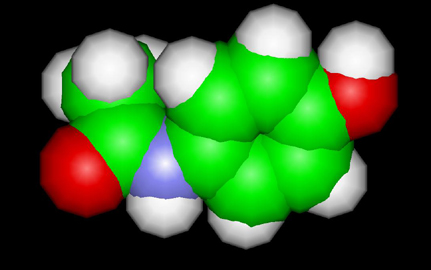The Procaine Molecule-Novocain

Ball and Stick Model for Procaine Molecule - Novocain
To View the Novocaine Molecule in 3D --->>in 3D with Jsmol
Chemical and Physical Properties of Procaine Molecule - Novocaine
Procaine was first synthesized in 1905, and was the first injectable man-made local anesthetic used. It was created by the German chemist Alfred Einhorn (1857-1917) who gave the chemical the trade name Novocaine, from the Latin Novus (meaning New) and caine, a common ending for alkaloids used as anesthetics. It was introduced into medical use by surgeon Heinrich Braun (1862-1934).
Procaine is used less today since more effective (and hypoallergenic) alternatives such as lidocaine (xylocaine) exist. Prior to the discovery frequentlyof procaine, cocaine was the most commonly used local anesthetic. Procaine (like cocaine) has the advantage of constricting blood vessels, which reduces bleeding, unlike other local anesthetics like lidocaine, and without the euphoric and addictive qualities of cocaine.
Procaine, an ester anesthetic, is metabolized in the plasma by the enzyme pseudocholinesterase through hydrolysis into para-amino benzoic acid (PABA), which is then excreted by the kidneys into the urine. Allergic reactions to procaine are usually not in response to procaine itself, but to PABA. About 1 in 3000 people have an atypical form of pseudocholinesterase, which doesn't hydrolyze ester anesthetics such as procaine, resulting in a prolonged period of high levels of the anesthetic in the blood and increased toxicity.
Procaine is the primary ingredient in the controversial preparation Gerovital H3, which is claimed by its advocates to remedy many effects of aging. The mainstream medical view is that these claims were seriously studied and discredited in the 1960s.